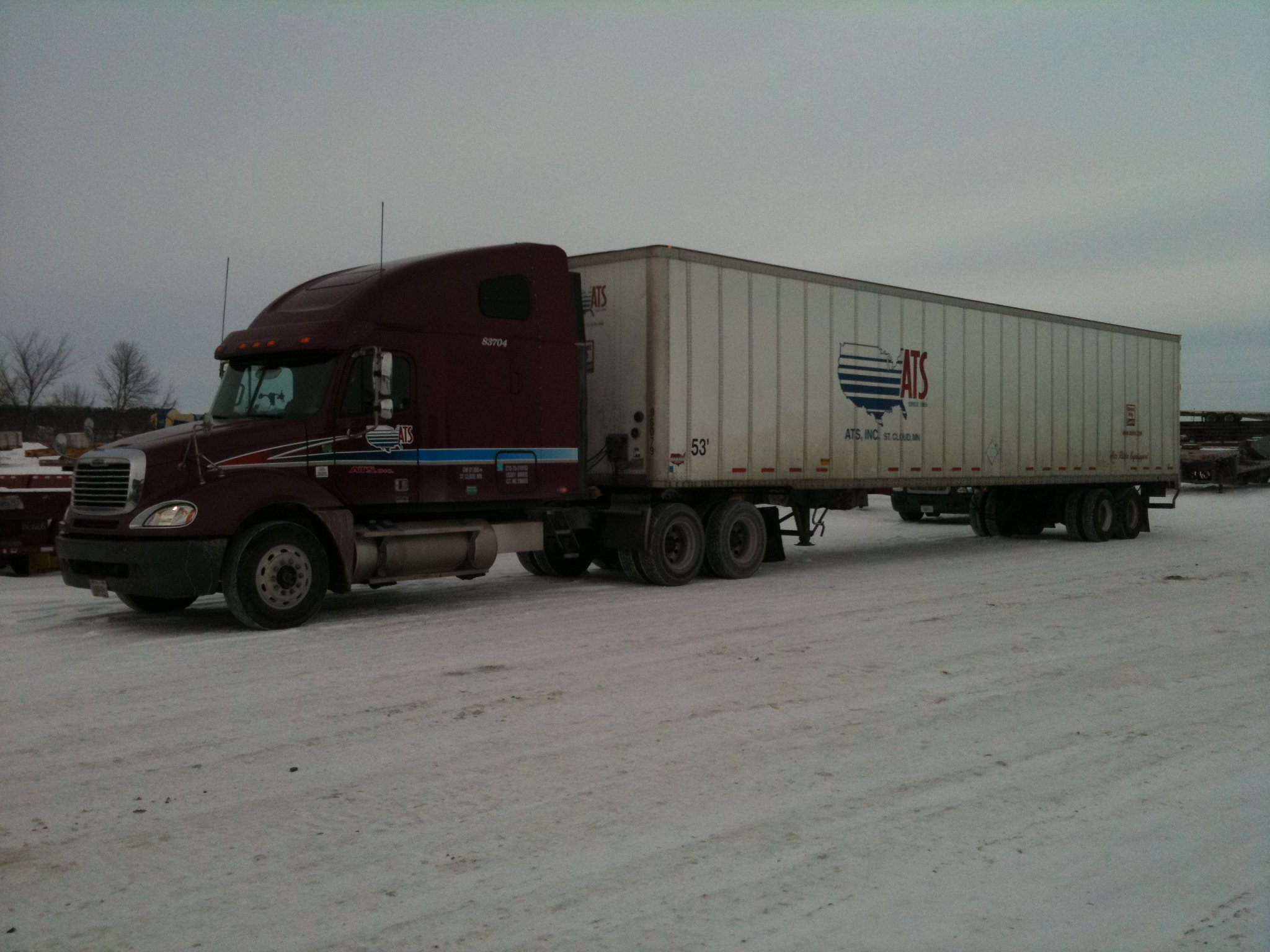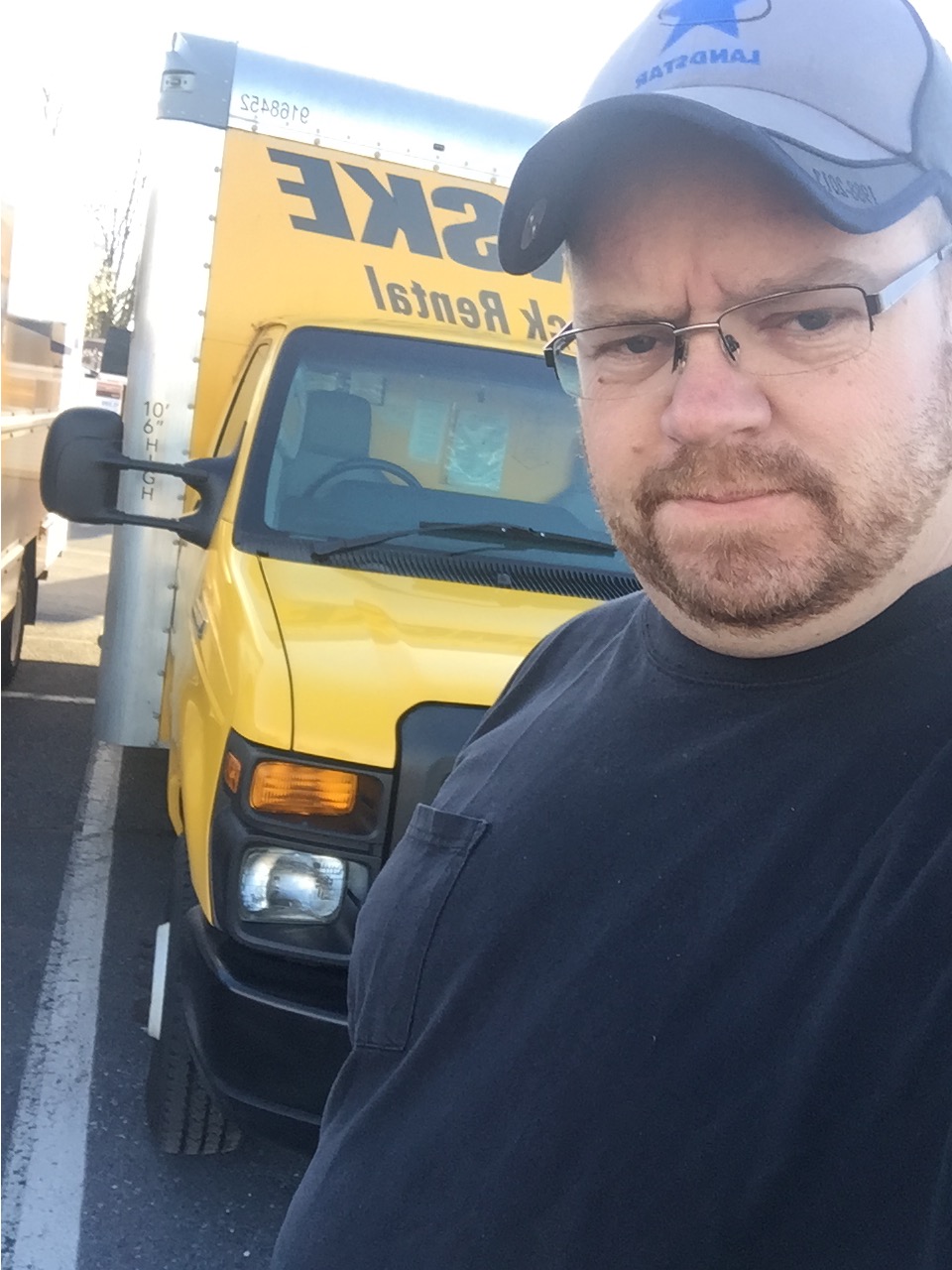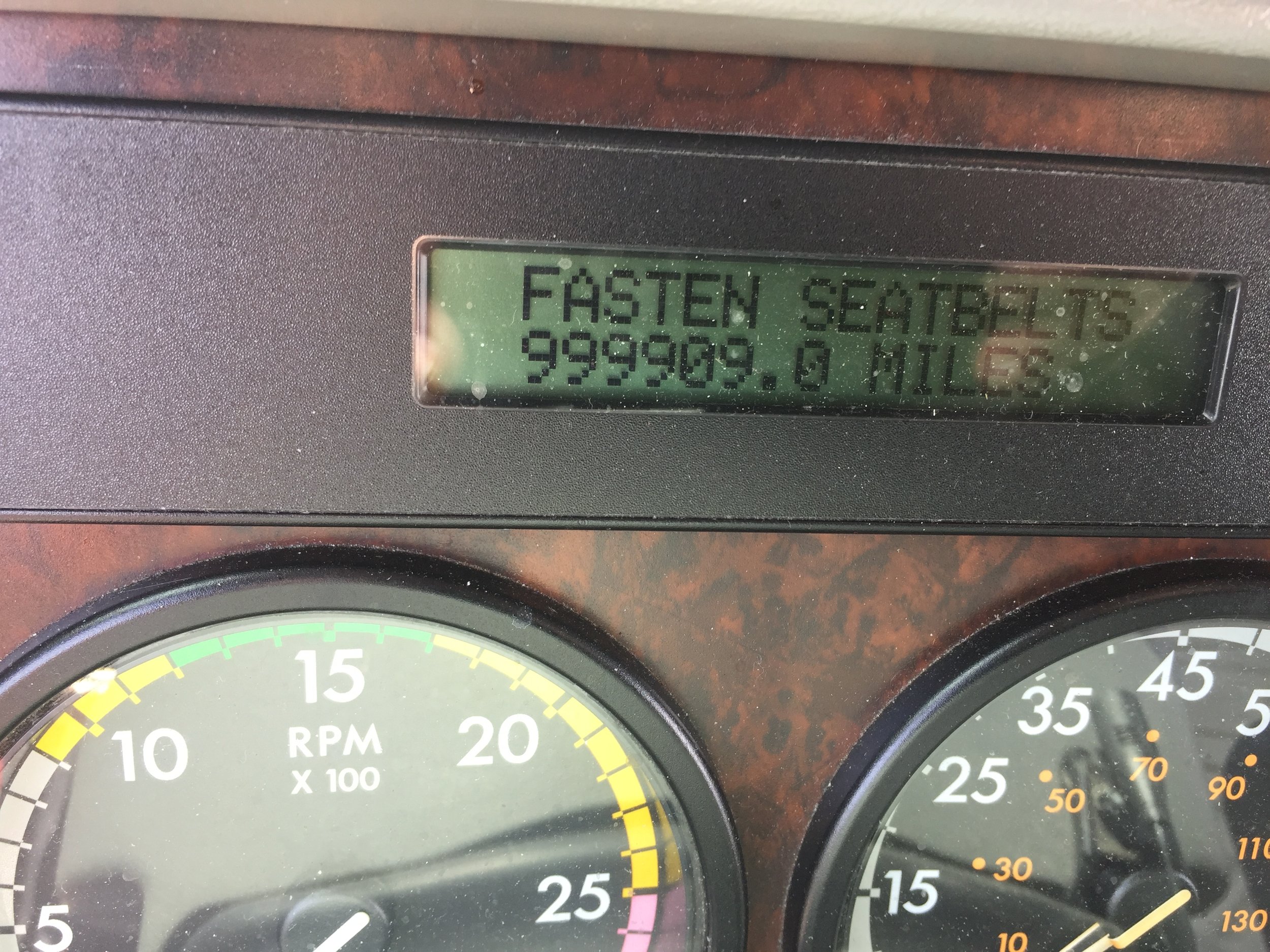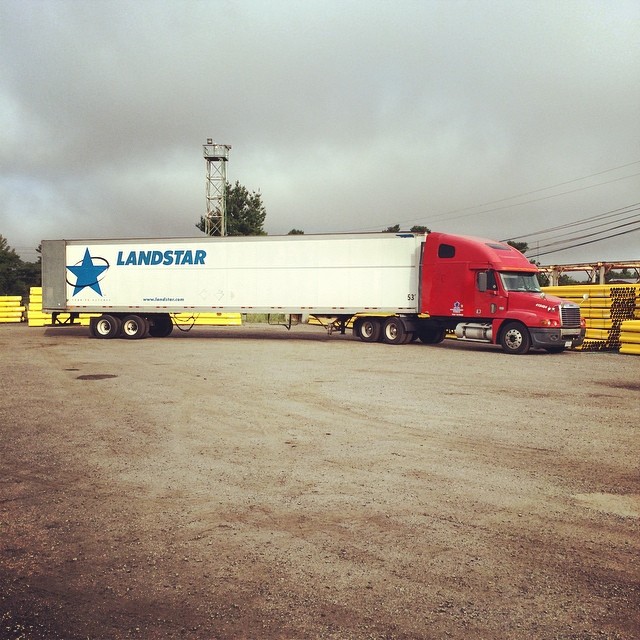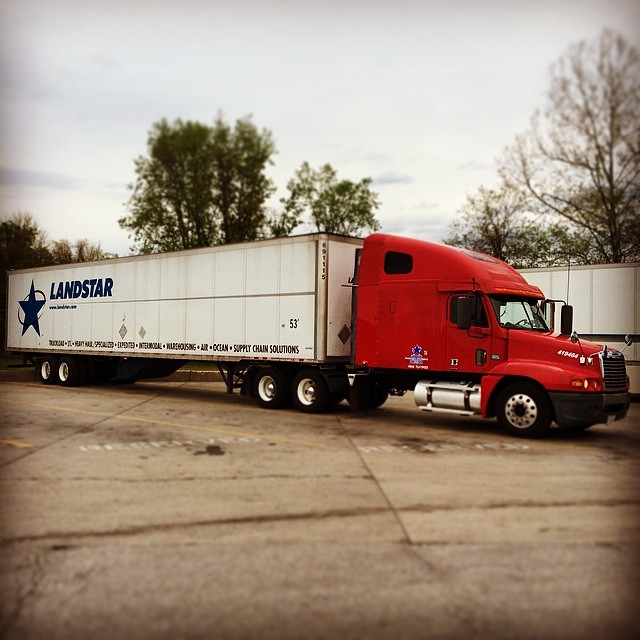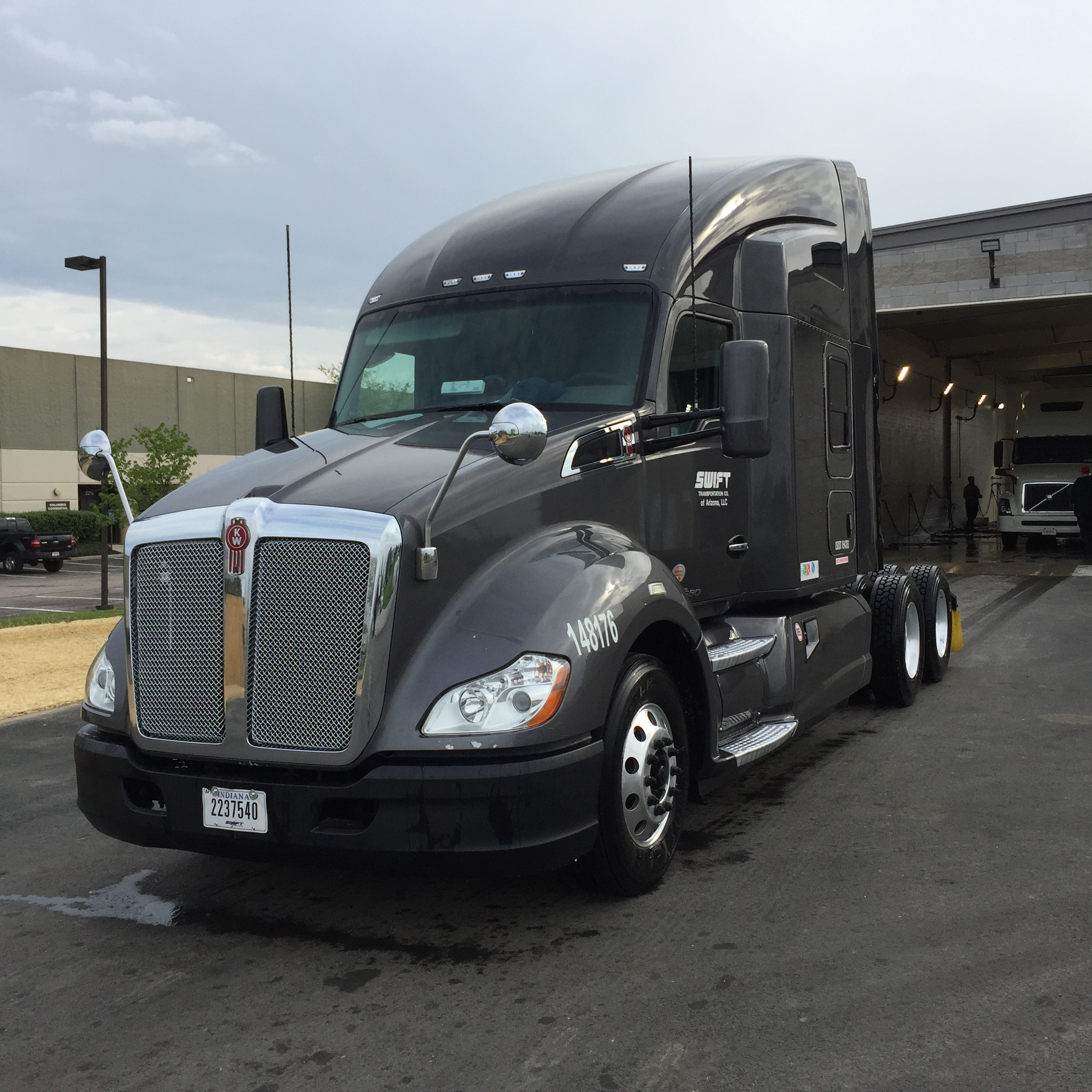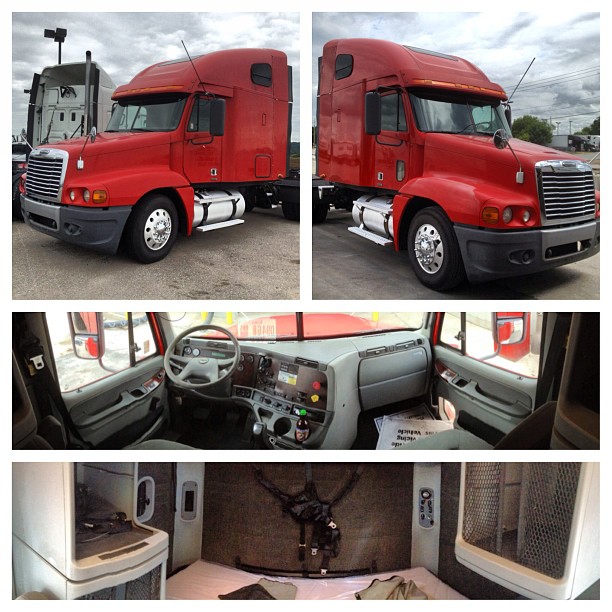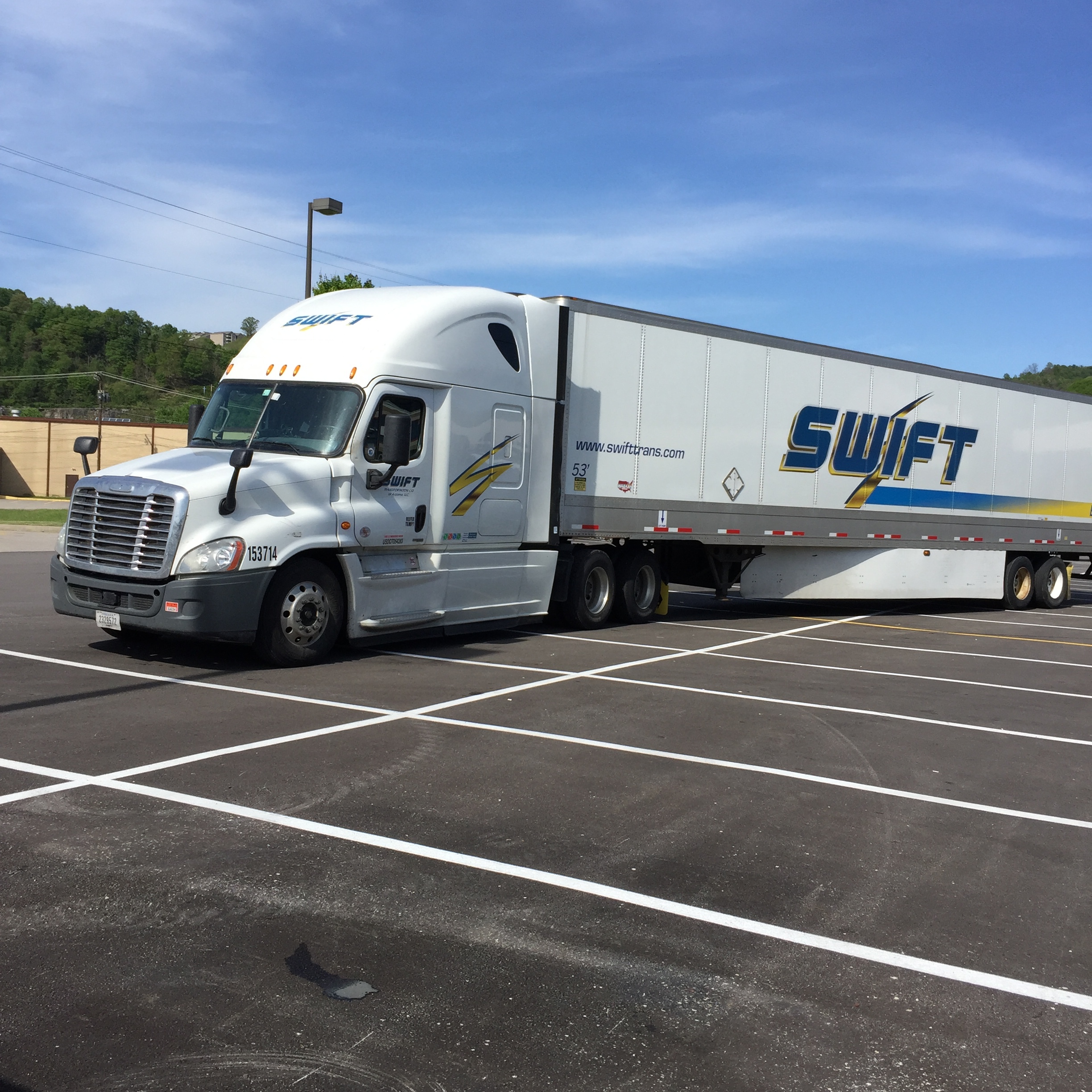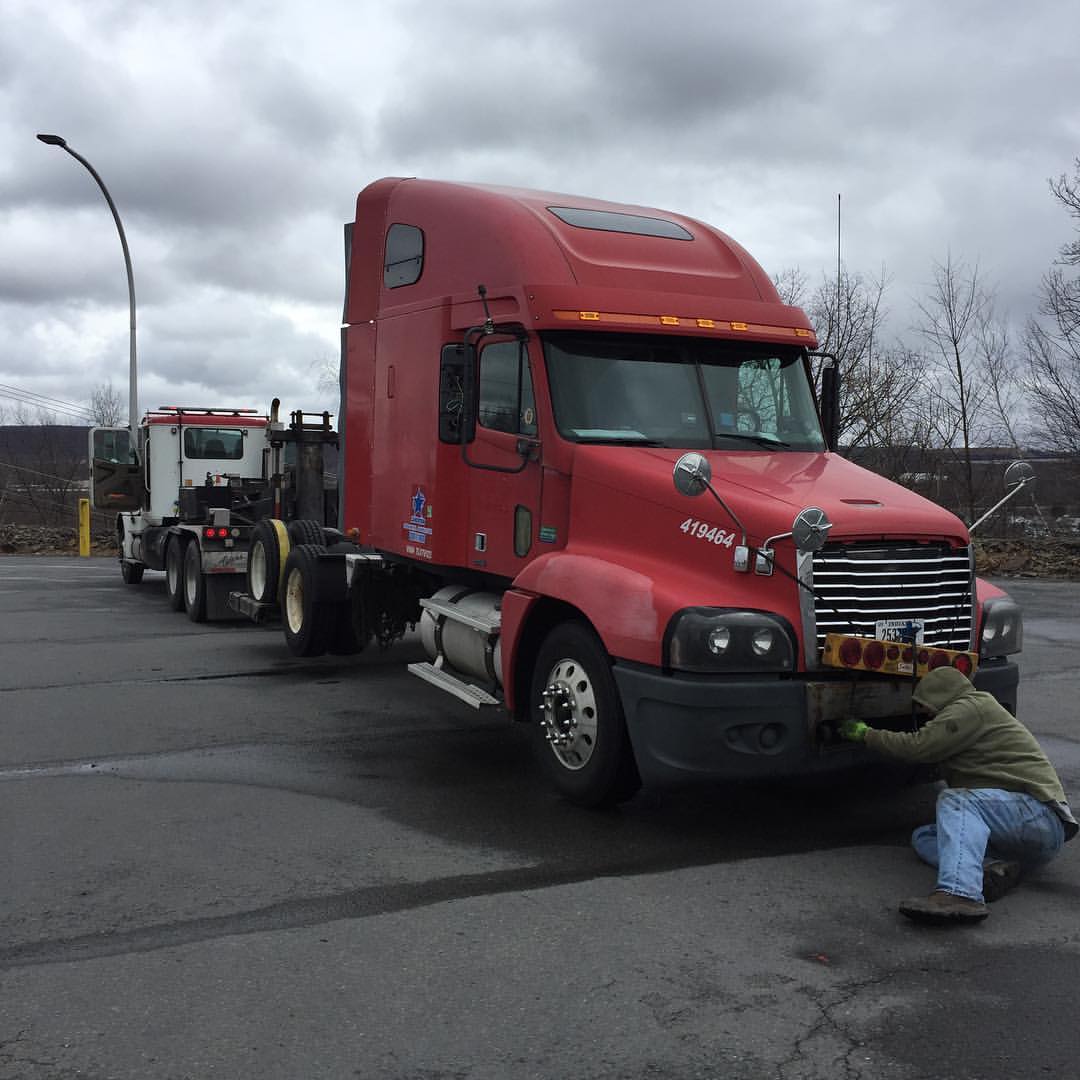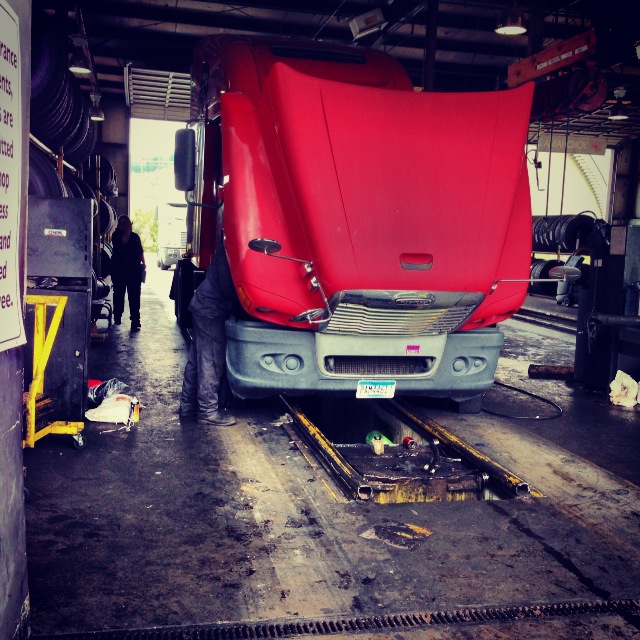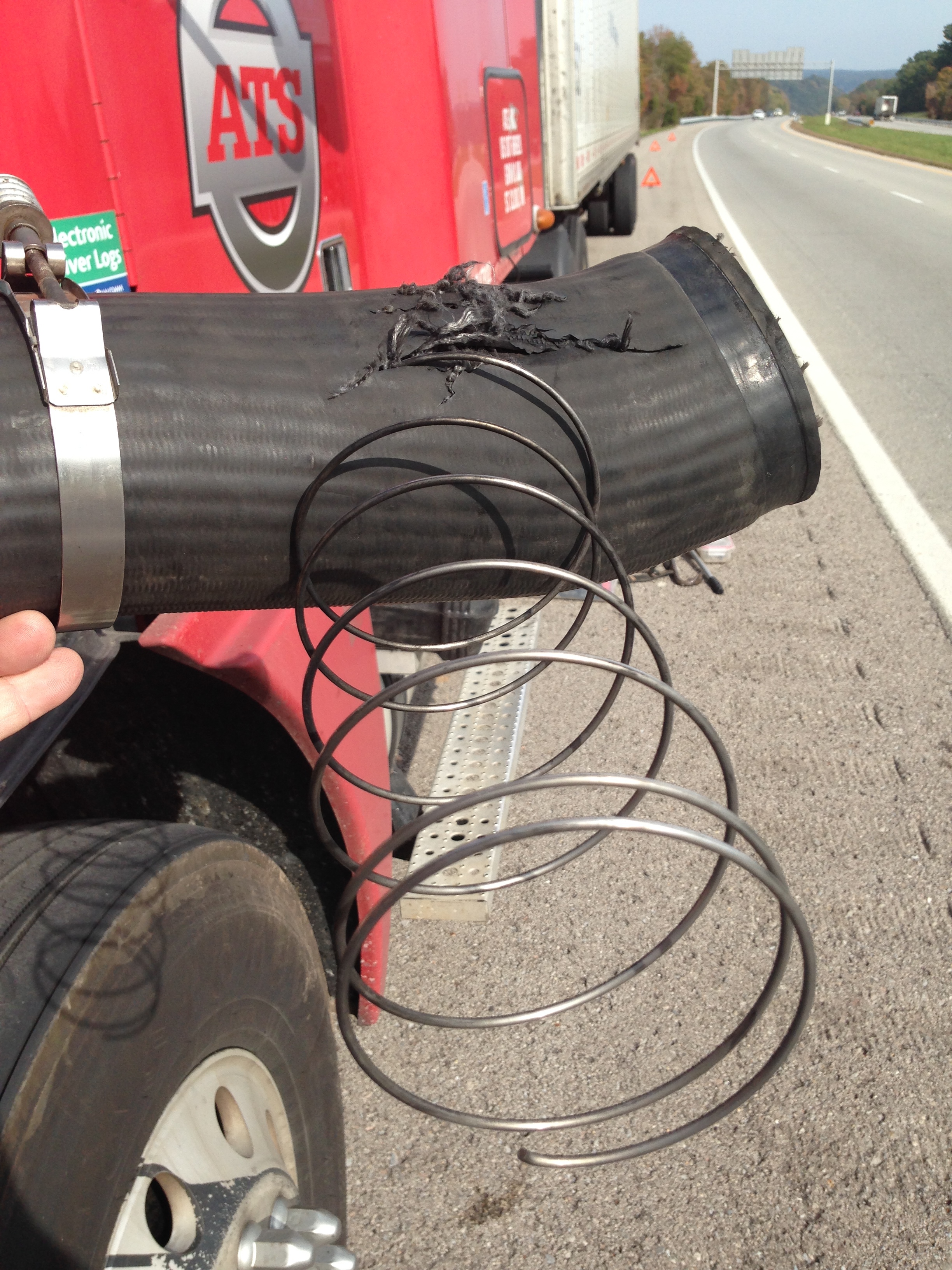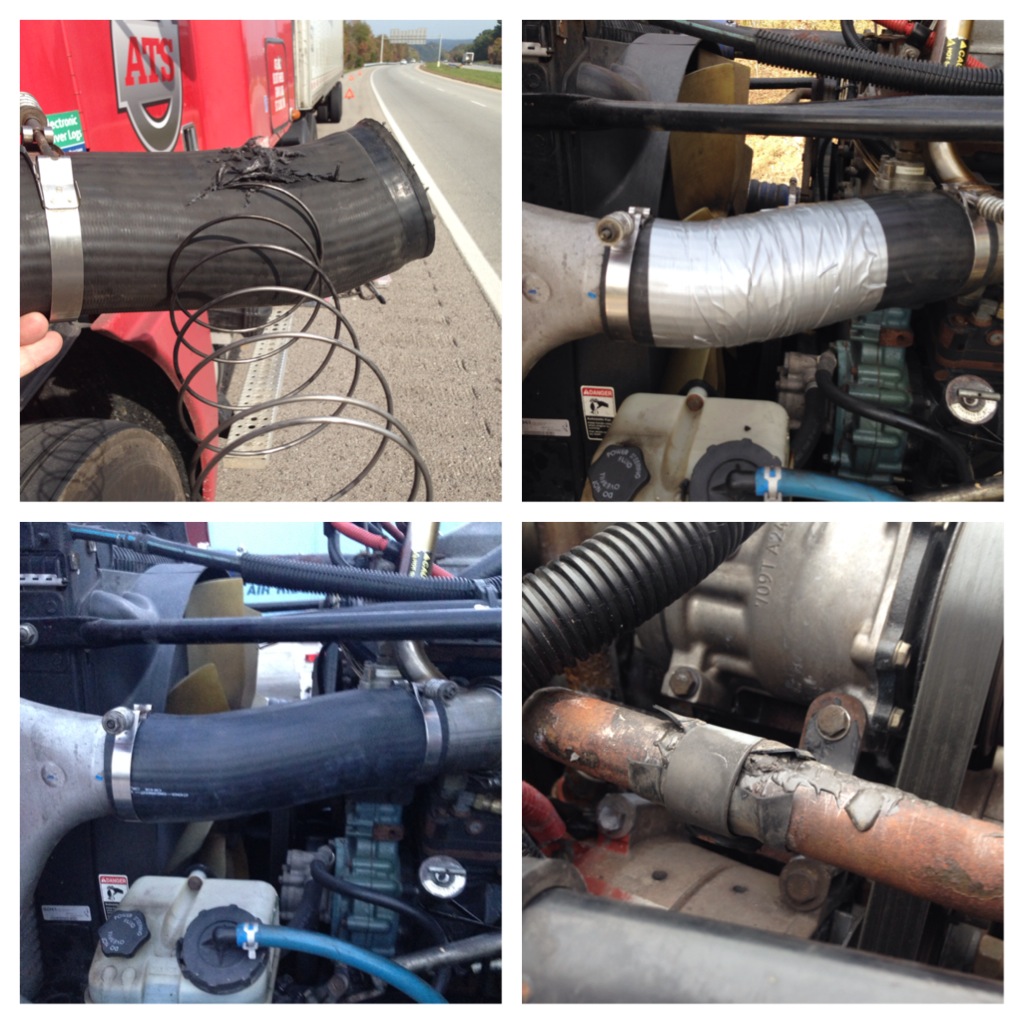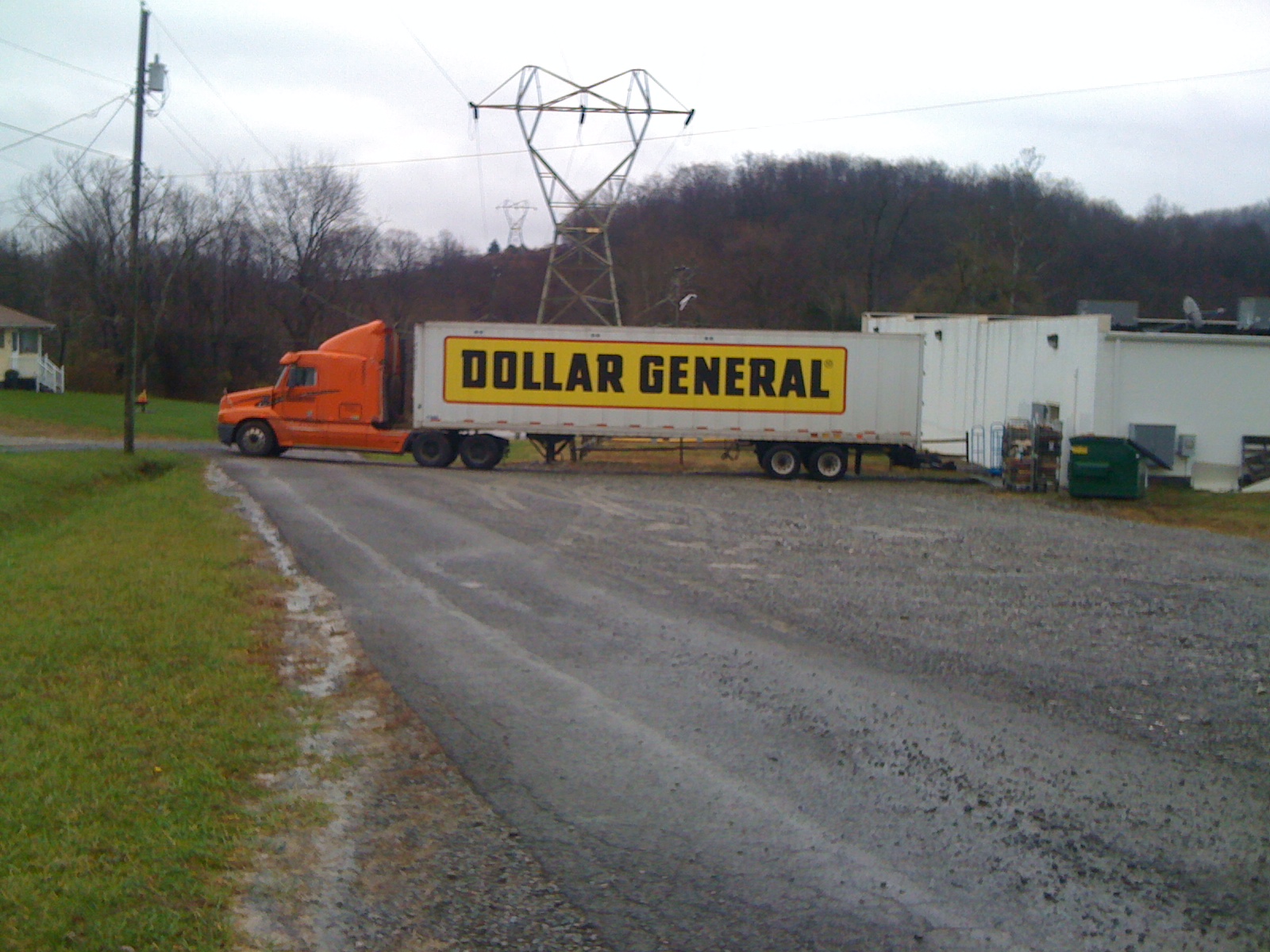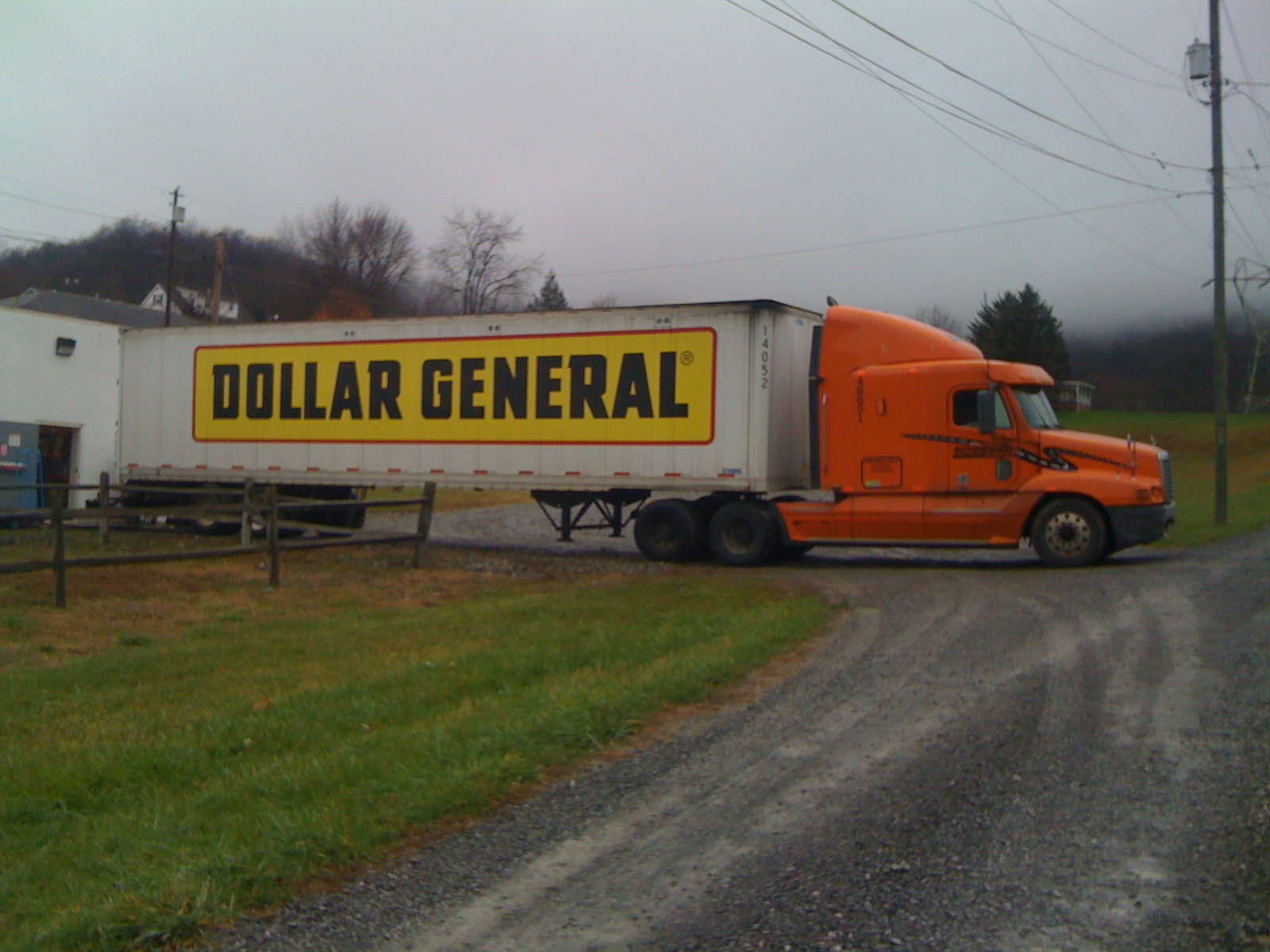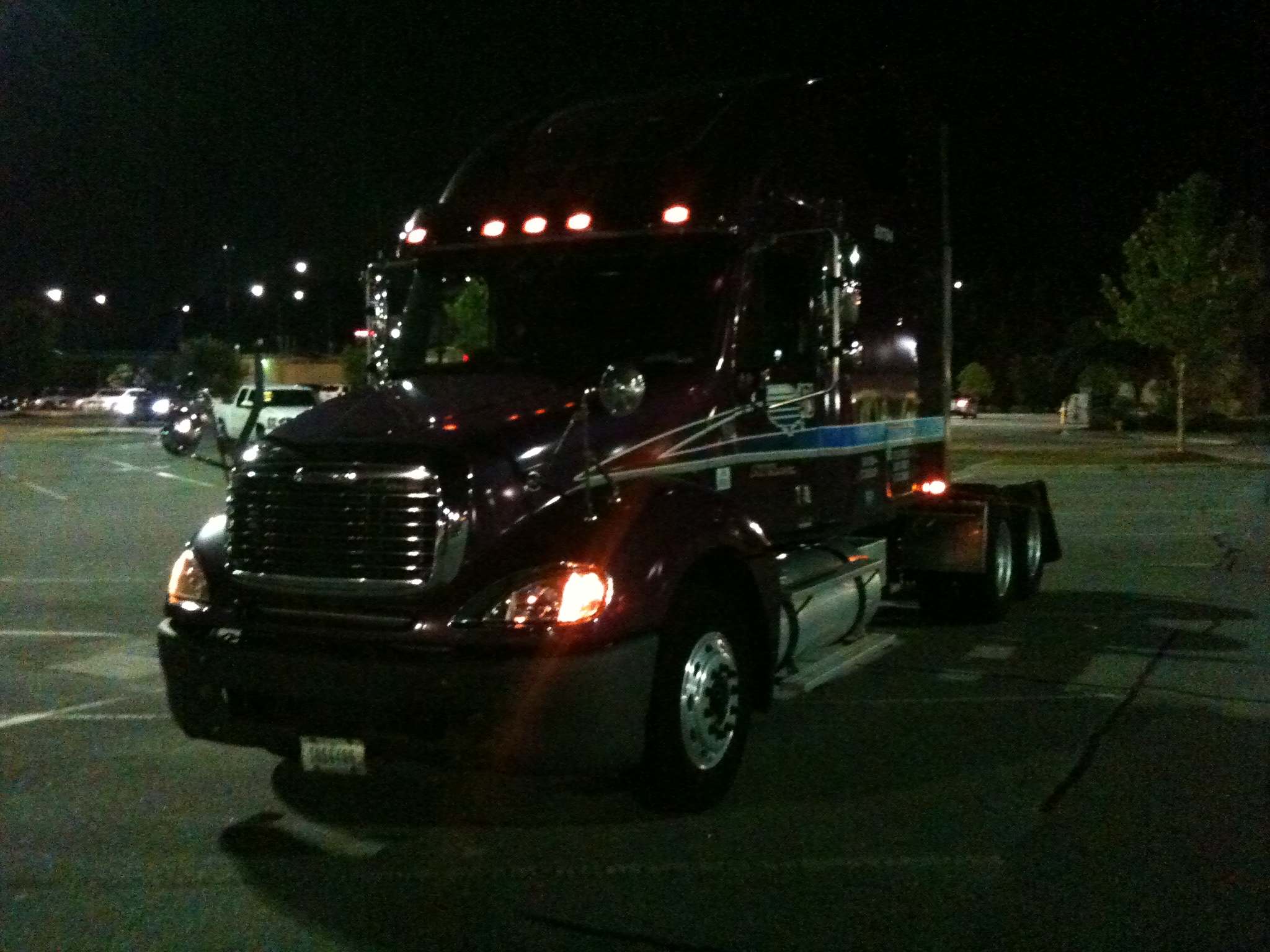Failure Is An Option
JUNE 18, 2019 - No one ever plans to fail. I certainly didn’t. I began my journey with a specific goal in mind - Have a paid-for truck in five years, and I almost made it. In some respects, I did make it. I started in January 2011 and my last truck payment was made in May of 2016. Unfortunately for me, I still lost the truck in April 2017. The following is my story of failure and redemption.
The Desire
It began in 2008. I was working for a small carrier (around 28 trucks) in Columbus, OH. I’d never worked for a company with less than 5,000 trucks. It was a new experience for me. We had just moved to the area and I did some networking and found the company through a contact at church. I interviewed and accepted quickly. It would be a home-on-the-weekend regional run and I would earn in the $55,000 to $60,000 range. I would run air freight Sunday night and Friday night, and then some out-and-back load in the middle of the week. What was most different about this company was how we were dispatched. We were handed these pieces of paper I’d never seen before called “rate confirmations.” I could tell that there was a dollar amount on them, but it was covered over with a sharpie. Curiosity got the best of me so I would hold them up to a light to see the dollar amount shine through. This was first ever opportunity to see what a truck earned in a week. This was around May 2008. I quickly learned that my truck was making a LOT of money. The air freight loads alone paid the truck close to $10,000. When you added the middle of the week run, it got close to $13,000 per week! I could see how much fuel I was putting in, and I was driving a 2003 Freightliner Columbia with a ton of miles, so it wasn’t hard to figure out some basic costs. These ol’ boys were cleaning up. The fire began to burn inside me. I’d always been interested in entrepreneurship. I’d always dreamed of having my own business. Now I had some concrete numbers to refute the “You cain’t make no money as an owner operator” foolishness. And then….it all went away. 2009 happened. The air freight was here today and gone tomorrow. Poof! The company stayed afloat and we kept driving. I spent a week inside the office after a minor back injury on “light duty” and one of my responsibilities was to file rate cons. I found a load I had just done two weeks before - Baltimore to Columbus: $300. THREE. HUNDRED. DOLLARS! I took the rate sheet into the boss’s office and asked “Dude. What the hell is this?” With a wry smile he answered, “That would be a rate confirmation.” I said, “I know, but…$300!?! For almost 500 miles!?!” At this point I have “SAY NO TO CHEAP FREIGHT!” signs flashing in my mind. He asked, “What did you get paid to go out there?” (To this day I still remember the Shipper and receiver on that load). “$1350” I responded. “So, you went out there for $1350, came back for $300. What did you make on the trip?” My wheels began to turn….reluctantly. Sheepishly, I responded, “$1650.” He said, “$1650 on 950 miles is $1.73 per mile. Our cost is $1.25 per mile. We’re good.” Seeing that there was more to my question, he asked me what was really on my mind. Keep in mind here that Jevic had just abruptly shut down, and the storied shutdown of Arrow Trucking was months away. “Are our jobs safe?” I blurted out. He knew that I was curious and had been paying attention, so he explained that when we were raking in all that crazy cash, it was going in the bank. He said, “I could pay every one of you to pull empty trailers for six months if I had to. This company is on solid footing.” It was and it is. That company is still there today and is thriving.
Going For It
I had to leave that company later that year as we moved out of state, so I went back to the last mega carrier I had been with. It was a disaster. Less than eight months later we were back in Columbus, but there was no room at the Inn. He didn’t have any trucks available so I took a dedicated run for another local firm in Columbus. As we neared the end of 2010, I felt like it was time to go for it. We were surviving on my $750 per week take home pay, but that was it. We needed more and I believed there was more. I did a ton of research, talked to a bunch of drivers, and decided on a plan for the future.
Anderson Trucking Service
The first truck I leased from ATS, Inc.
On January 1, 2011, I boarded a Greyhound bus at 1 am for the 26 hour ride to St. Cloud, MN. I leased a 2007 Freightliner Columbia and operated it in their Specialized Pad Wrap Division for two years. By all accounts it was a successful venture. I was profitable and made more money than I could have as a company driver. Their leases were one-year deals with a completion bonus at the end. I completed two leases in that truck. As the second lease was ending, I knew that I could not lease that truck a third time. It had too many miles on it. A friend had been working to convince me to come over to the flatbed division, so I decided that I would give that a try. The logic was that I could, in less than four years accumulate a lot of experience in different divisions and then move on to another opportunity with my own truck that I would buy. My five year plan was still intact. It was about to be turned upside down.
The Truck From Hell
My new truck for the ATS flatbed division was a 2011 Peterbilt 386 with a Cummins ISX engine. That truck would cost me $50,000 in seven months. The whole story is detailed here. In August 2013, the Peterbilt broke down for what I considered to be the LAST time. I was broke down in Des Moines, IA. I called Lone Mountain Truck Leasing and asked, “What’s the oldest truck you got?” The answer was “2007 Century with 600,000 miles.” I replied, “I’m on my way.” I took the ATS truck back to St. Cloud and turned it in. I rode a bus back to Omaha and began the process to lease my “new” truck on to Landstar. The process dragged on for two weeks and I started getting desperate. I called my old ATS Van Division fleet manager and told him I’d just bought a truck and asked if he would have me on his board. He said, “Absolutely!” so I cancelled my application with Landstar and headed back to St. Cloud.
Turning Around
When I did my accounting for 2013, I saw that I had made $154,000 in gross revenue. HALF of that was earned in my 2007 Century from August to December. I started digging myself out of the hole and by the end of 2013 I could breathe again. I had my own truck and was officially a real owner/operator. By March of 2014 however, I could see that there were still more opportunities available outside a carrier like ATS. I needed to get to Landstar. I went to orientation for Landstar in April 2014.
Landstar
It took a little while to get a grasp of booking my own loads, but I did well in the first few months. I was matching or beating the numbers I had done at ATS. I realized that the advantage at Landstar is that no one can manage my time better than I can. An agent called me about a new customer he was getting that was only 70 miles from my house and asked if I would try it for a week and see if I liked it. My relationship with that customer still exists today, five years later. My five year plan was back on track. If I kept going at my current rate, I would soon have a paid-for truck and a dedicated run working four days per week.
The Truth Can Be Painful
I was really good at making money - choosing lanes, putting loads together, getting the job done. I was a super producer. I was not a super saver. My years of burning the candle at both ends and not having a savings plan was about to turn my life upside down again. This time, it wasn’t going to be as easy to overcome.
Two days before Christmas 2015, I had booked two loads to do in place of my dedicated run who had their plant shut down for the holiday. I knew I had some problem with my engine, I just didn’t know exactly what it was. I found out on December 21. My engine blew a head gasket that I would later find happened because of a dropped liner. The engine would need a complete inframe rebuild. I had $300. Three Hundred Dollars. That was it. Three hundred bucks to my name and a $24,000 inframe estimate. Through donations from friends, family, and a miracle intervention of an angel investor, I got my engine rebuilt and lived through the down time. I was back on the road the second week of January. Unfortunately, my problems were not over. The market of 2016 was soft and my dedicated run had ended for a time. I was lost at sea through the spring and summer. I brought my best friend on the truck as a co-driver in June and we tried to work together to right the ship. It still wasn’t working. He had to leave in early October to take another job, and I was on the verge of a nervous breakdown. I parked the truck in the end of October and put it up for sale. My plan was to do something different. Sell the truck and give the proceeds to the angel to cover his investment. My confidence was shot. I no longer believed I could make it as an owner/operator.
Sometimes A Break Is All You Need
For two months my truck sat idle and the phone did not ring. By the end of December, my confidence began to grow and I had time to study where I’d been and the decisions I’d made. No one was calling on the truck, but the road was calling me back. On December 27, 2016 I booked a load and decided to try again.
While I was sitting at home, I began to develop a new strategy for picking loads. I wanted a more simple formula. I wanted to be able to look at a load and decide in seconds if I wanted it or not. In order for this strategy to work, I began to see that I needed to look at more than ONE load. I needed to have a plan in place to run a series of loads so that I could spread the rate across two or three. One great one, one good one, and maybe one not-so-good one, as long as that one got me to another great one. I needed to do at least $1,250 per day gross revenue. A load that took one day needed to pay at least $1,250, two days $2,500, and three days $3,750. Those were the minimums. I decided that my time was as valuable or more valuable than the miles I could run. It worked. BIG time.
Anyone running the first three months of 2017 could tell you that the market sucked. It was rough. In the first quarter of 2017 I earned $50,000 to the truck after all percentages were taken out of the rate. I ran hard. I was still home all but one weekend. I was on track to the biggest year of my career as an owner/operator. At the current pace, knowing that rates would increase throughout the spring and summer, I would gross well over $200,000 to the truck and possibly more. The current pace would require having a truck with an engine that wasn’t blown up. I was about to encounter an obstacle that I wouldn’t be able to overcome.
"3,577 RPMs. We don’t know what’s wrong or why it happened, but whatever it is, it’s really bad.”
Not quite a million.
The final tow to the Detroit shop.
On the morning of April 7, 2017, I got up, took a shower, and ate some breakfast at the Iron Skillet inside the Petro in Scranton, PA. I would hit 1,000,000 miles that day, but it was not to be. The truck had been shut off the entire night. I started it up to do my pre-trip, and after about five minutes it started running really bad. A mechanic from the Petro came to look at it, but he couldn’t determine anything. When I tried to move it out of my parking spot to the shop, the engine RPM’s shot up rapidly. I knew what was happening. It was running away. It had tapped into some unrestricted fuel source and would go until it blew. I jammed it into first gear and dumped the clutch. I caught it but it was too late. The engine began knocking and I shut it down. I towed it to the Detroit Diesel dealer in Scranton. They didn’t even open the hood. They plugged up the computer and saw 3,577 RPM. “You’re done.” I had planned on turning one million miles the next day. It wasn’t to be.
When I put the truck back on the road in December, I had joked, “I still don’t have a savings. I’ll just have to run hard, save hard, and if it blows up, I’ll just go drive for Swift.” I called Swift from the Detroit dealer and put in my application. Ten days later I was in orientation for Swift and the truck was sold for $5,000.
Going Home
As you can imagine, going to Swift was at the top of a list of decisions that weren’t well thought out. It wasn’t that Swift was terrible. In fact, when you show up at Swift with 20 years of experience, they treat you like a god or a unicorn they’ve never seen before. I lasted 30 days. I had a plan to stay around to be a trainer, but I wasn’t going to survive that. My home life was in trouble. My financial situation was a mess. I had to get home and start repairing the damage from the foundation.
By July I had landed a local job with a global corporation hauling compressed gasses. It had pay and benefits. I was home every day and off weekends. It was about 1/3 of the money I was accustomed to earning. We had to buckle down and learn to live on less - a LOT less. We made it through the end of 2017 barely. My mortgage and car payments were behind, and there wasn’t much hope of getting them current. I was working twelve hour shifts from 3 am to 3 pm. I tried finding work to do on the weekend, but my employer strictly restricted what I could do “on duty.” My only options were cash under the table jobs, and there just weren’t any. It had been eight months since I lost the truck. I started digging in to the numbers. I needed to know why I failed. I was shocked to discover that only eighteen cents per mile from the day I bought the truck until the day I lost it would have covered EVERYTHING. Eighteen pennies. That’s all it would have taken.
A New Perspective
It’s sometime in January 2018. It’s about 4:00 in the morning. It’s bitterly cold and I’m on a forklift unloading my trailer. I remember it as clear as day. “This sucks. I’d rather drive 3,500 miles a week in a sleeper truck than do this. I still don’t see my kids. I come in, dead tired, and go straight to bed. I’m about to be foreclosed on and my wife’s van repossessed. And it’s all MY fault. I have no one to blame but myself. I killed the goose that was laying the golden eggs.”
I still believed that my opportunities were non-existent. I had burned every bridge I’d come across. I decided that what I could do is try to warn others of the danger. I was still a member of some Landstar groups on Facebook. So I channeled my inner Jerry McGuire and wrote an open letter of sorts to any and all BCO’s that needed to hear it (and to some who needed it but didn’t know it yet). I told them of my failure and that I was my fault. I couldn’t blame the agents, or Landstar, or the economy, or the government. This colossal screw up was mine and mine alone. I told them, “If you think there is some time coming in the future where you will get ahead enough to start saving, understand that day is never coming. TODAY in the day to start.” I got a lot of positive reviews from my post and people thanking me for sharing my experience. Experience. That’s all I had. I had nothing else. I was on a sinking ship with no sign of land. And then I got a message from Larry Long.
Starting Over
The first time I talked to Larry on the phone, I new we had a kinship. As he explained his process and how his goal was obviously to profit, but to do so while mentoring and teaching people, I knew this is someone I could work with. I went back to my own 2017 revenue numbers and did the math. If I was paid 25% of gross revenue and accessorals, could I make it? Using the figures from my own operation, the answer was a solid “yes.” I was on the verge of foreclosure and repossession. I had to do something. I couldn’t stay much longer in the job I was in. Even working 60 hours per week and earning overtime, it wasn’t enough. As fate would have it, about three days after I met Larry for an interview, I was informed that my overtime would be cut from 20 hours per week to 5 hours per week. The decision was made. The timing was uncanny. Larry had a truck he was in the process of getting inframed, so it would be ready about the time I was. We met in Indianapolis for orientation. The truck was done. I picked it up at the Detroit shop and would put the first miles on the new engine.
I later learned that Larry doesn’t expect most drivers to make it 90 days. I was included in that assessment. He likes putting drivers on dedicated freight because it is consistent money for both the truck and the driver. I don’t like dedicated freight. I find it boring. I was also in a position where I needed to make the most money possible. I was concerned that dedicated freight wouldn’t allow me to make top money. Fortunately for me, the dedicated run he had planned out for me fell apart. His only option was to give me access to the board and turn me loose. He did turn me loose and I was about to reap the benefits of the inflated 2018 market.
The Best Market in the Last 20 Years
We have a “$6,000 minimum weekly revenue requirement” for all of our trucks. The trucks need to earn at least $6,000 per week (gross revenue) to meet all of the revenue needs. In the 2018 market, I was regularly doing $10,000 to $12,000 per week. At 25%, I was making MORE money than I had when I was a BCO. My best taxable income as an owner/operator had been about $77,000. In the first 52 weeks with Larry, I made $96,000! About halfway through the journey, I came upon a stark realization. I no longer desperately needed to own a truck. I still wanted to own a truck, but the realization that I could make more money than a company driver working for a mega carrier took the anxiety away and removed the desperation that drove me to make so many risky decisions. Back in 2010 when I started down this path, I believed that I needed to own a truck because that was the ONLY way I could make enough money to support my family. I still want to own a truck. I want to own many trucks. I want to have a fleet where I can offer others the same experience that I had. There is a peace that I now have that is difficult to put into words. I see the opportunities in front of me and I have no fear that I can’t achieve my goals.
Conclusion
Failure is real. Failure is possible. Don’t ever forget that. Hard work isn’t enough. A solid work ethic is important, but clarity of vision is more important. Where do you want to be in five years? What will it take to get there? Dave Ramsey says, “Broke, Desperate, and Stupid are three brothers that like to hang out together.” Is your truck payment too high? What is your fuel mileage? Do you have a solid maintenance savings plan? Do you know how to network? Do you understand that you’re in business to serve and not be served?
There are a lot of things I wish I hadn’t experienced. I wish my wife and kids didn’t have to suffer the consequences of my bad planning and risky decision making. Make no mistake, I am a lot better for the lessons I learned, but if there is a way (there is) to learn the same lessons without all of the risk and stress, then I highly recommend finding it. I was really good at earning revenue. As I have discovered since I started helping Larry with the operations at Blue Ribbon, I was also very lucky. My truck was only towed once, and that was at the end. I managed to make it four years. Just in the last four weeks, we have experienced a few relatively minor breakdowns that would have ended me. Now that I have seen the other side of what it takes to maintain a fleet, keep drivers in them, and meet all of the needs of our dedicated customers, I see the importance of having a plan far beyond the next load.
With Larry’s decades of business experience and my technical prowess, we are about to launch a series of teaching and training videos and podcasts. I want others to be able to experience the freedom and security that comes from being an owner/operator without the stress and anxiety that comes with doing it wrong. Stay tuned to our website and Facebook Page for updates as we get the details worked out and start producing content.
